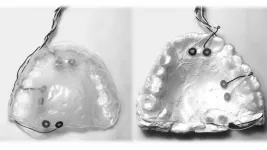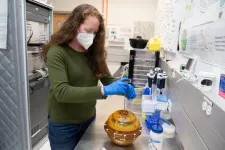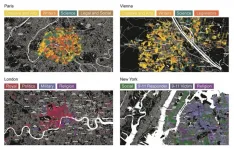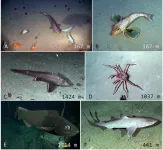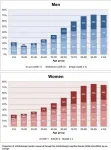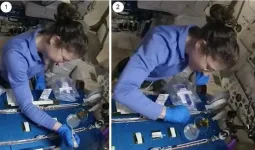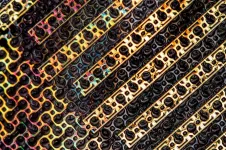New markers for coronary microvascular disease identified
2021-06-30
(Press-News.org) Although cardiovascular disease is the main cause of illness among women in the U.S., certain conditions such as coronary microvascular disease (CMD) cannot be easily diagnosed. In a new study, researchers at the University of Illinois Urbana-Champaign have identified specific biomarkers for CMD, which might reduce future hospitalizations.
CMD damages the inner walls of blood vessels causing spasms and decreased blood flow to the heart muscle. "Clinicians look for plaque formation in the blood vessels, which does not occur in CMD," said Zeynep Madak-Erdogan (CGD/EIRH/GSP), an associate professor of nutrition. "Usually, women leave without having the root causes of the chest pain addressed and they come back with further complications within a year. Since this condition is more common in postmenopausal women, we want to identify the biomarkers that are associated with CMD."
The researchers collected blood samples from three different groups containing 20-25 women each: postmenopausal women who were healthy, those with coronary artery disease, which is characterized by plaque formation, and those with CMD. The blood serum samples were then analyzed to see if there were any molecules that were different in the CMD group.
Out of 175 molecules scanned, the researchers identified stearic acid, which is found in animal and plant fats, and ornithine, an amino acid commonly found in meat, fish, diary, and eggs, as indicators of CMD.
Ornithine is formed from the amino acid arginine which is broken down by two separate pathways. One forms ornithine and the other forms nitric oxide, which helps in maintaining the normal functioning of the blood vessels.
"Our observations imply that the increase in ornithine means that the second branch is not working, which is why we can use this molecule as a biomarker for the disease," Madak-Erdogan said.
Interestingly, other researchers have found that estrogen may have a role in the development of CMD, as evidenced by hormone-replacement therapies which decrease CMD risk up to 30%. "Our observations further indicate that estrogen is involved because we know that it improves the function of nitric oxide," Madak-Erdogan said. "Since postmenopausal women have lower levels of estrogen, it would explain why this condition is more prevalent in these populations."
The researchers are trying to identify more biomarkers, such as proteins, that can be used to detect CMD. Additionally, they are testing more women to validate their findings. "This study was done with patients in Turkey, so we don't know if the same biomarkers will be present in the U.S. We want to look at bigger populations to see if we can combine the data to find efficient signatures for CMD," Madak-Erdogan said.
The study "Identification of circulating diagnostic biomarkers for coronary microvascular disease in postmenopausal women using machine-learning techniques" was published in Metabolites and can be found at https://doi.org/10.3390/metabo11060339.
INFORMATION:
The work was funded by the University of Illinois, the ACES Future interdisciplinary research explorations grant, the Office of International Programs-Conrad Award, National Institute of Food and Agriculture, U.S. Department of Agriculture, National Center for Supercomputing Applications Faculty Fellows, and TÜB?TAK 2219 Post Doctorate Research Scholarship Program.
[Attachments] See images for this press release:
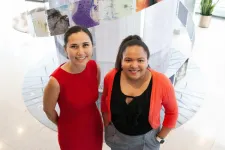
ELSE PRESS RELEASES FROM THIS DATE:
2021-06-30
The virus that gives rise to COVID-19 is the third coronavirus to threaten humanity in the past two decades. It also happens to move more efficiently from person to person than either SARS or MERS did. The first African case of COVID-19 was diagnosed in Egypt in mid-February of 2020. Four weeks later, the first lockdowns began across Africa. Steven Schiff, Brush Chair Professor of Engineering at Penn State, who already had established research partnerships in Uganda, saw an opportunity for his team to apply what they were learning from their ongoing efforts to track and control infectious disease and ...
2021-06-30
Ten estuaries on the West Coast of North America have been identified as priority locations for expanding the use of conservation aquaculture in a study led by the Native Olympia Oyster Collaborative and funded by the Science for Nature and People Partnership (SNAPP). SNAPP is a research collaboration supported by the National Center for Ecological Analysis & Synthesis (NCEAS) at UC Santa Barbara.
The study, published in Plos One, recommends locations and methods for the strategic expansion of conservation aquaculture to bring back Olympia oyster populations -- both to local estuaries where they have most declined, and into more local restaurants for oyster lovers to dine on. The authors propose using aquaculture in these estuaries -- ...
2021-06-30
Even the mundane act of swallowing requires a well-coordinated dance of more than 30 muscles of the mouth. The loss of function of even one of these, due to disease or injury, can be extremely debilitating. For these people, nerve stimulation offers a ray of hope to regain some of their lost oral function.
In a new study, researchers at Texas A&M University have delineated the minimum size of electrical currents needed to provide sensation in different parts of the mouth. The researchers said their study is a first but vital step toward building electrical stimulation implants that can restore essential intraoral functions that are lost due to nerve or brain damage.
The results of the study are published in the journal ...
2021-06-30
Magnetic resonance imaging (MRI) is widely used in medicine to detect, diagnose and treat diseases such as cancer, while relying on experts' interpretation of images. Quantitative MRI, which obtains numerical measurements during the scans, can now potentially offer greater accuracy, repeatability and speed -- but rigorous quality control is needed for it to reach its full potential, according to a new study.
Researchers at the National Institute of Standards and Technology (NIST) led the study by 11 institutions comparing measurements by 27 MRI scanners from three vendors at nine clinical sites around the country. To obtain reference values and disentangle sources of bias and variation, the study used a tissue stand-in, or "phantom," originally ...
2021-06-30
A city's street names can provide a glimpse into its cultural value system and a way to quantify cultural indicators, according to a study published June 30, 2021 in the open-access journal PLOS ONE by Melanie Bancilhon from Washington University in Saint Louis, U.S., and colleagues.
Ever since named streets have existed, they have been used as a form of social engineering, mirroring a town or city's social, cultural, political, and religious values. Building off this concept in what they term "streetonomics," Bancilhon and colleagues used street names as an alternative route to quantify cultural indicators in four influential Western cities: Paris, Vienna, London, and New York.
The authors used multiple open data sources ...
2021-06-30
The deep sea Pacific Salas y Gómez and Nazca ridges are highly biodiverse and host unique fish and invertebrate taxa, according to video surveys.
INFORMATION:
Article Title: Deep-sea biodiversity at the extremes of the Salas y Gómez and Nazca ridges with implications for conservation
Funding: The expeditions were funded by the National Geographic Society and Pristine Seas donors with support to AMF. Conservation International, the Paul M. Angell Family Foundation, Tom and Currie Barron, and Alan Eustace provided additional support to DW, WG and JG. The Chilean Millennium Science Initiative Program grant #NC120030 ...
2021-06-30
In the German population, a surprisingly high 6% of under-18s are at risk of cognitive decline, falls and more from the cumulative effect of anticholinergic medications such as antihistamines and antidepressants.
INFORMATION:
Article Title: Anticholinergic burden: First comprehensive analysis using claims data shows large variation by age and sex
Funding: The authors received no external funding for this work.
Competing Interests: UH, OR, MB and JR are working at an independent, non-profit research institute, the Leibniz Institute for Prevention Research and Epidemiology - BIPS. Unrelated to this study, BIPS occasionally conducts studies financed by the pharmaceutical industry. Almost exclusively, these are post-authorization ...
2021-06-30
Researchers have developed and successfully demonstrated a novel method for studying how cells repair damaged DNA in space. Sarah Stahl-Rommel of Genes in Space and colleagues present the new technique in the open-access journal PLOS ONE on June 30, 2021.
Damage to an organism's DNA can occur during normal biological processes or as a result of environmental causes, such as UV light. In humans and other animals, damaged DNA can lead to cancer. Fortunately, cells have several different natural strategies by which damaged DNA can be repaired. Astronauts traveling outside of Earth's protective atmosphere face increased risk of DNA damage due to the ionizing radiation ...
2021-06-30
An important function of our vision is to segregate relevant figures from the irrelevant background. When we look at a visual stimulus, it drives a cascade of neural activity from low-level to higher level visual brain areas. The higher areas also provide feedback to the lower areas, where figures elicit more activity than the background, as if figures in the brain are highlighted with extra activity. Researchers from the Netherlands Institute of Neuroscience (NIN) now showed that feedback causes the extra neuronal activity in low-level areas and that the extra activity is essential for figure-ground ...
2021-06-30
MIT engineers and researchers in South Korea have developed a sweat-proof "electronic skin" -- a conformable, sensor-embedded sticky patch that monitors a person's health without malfunctioning or peeling away, even when a wearer is perspiring.
The patch is patterned with artificial sweat ducts, similar to pores in human skin, that the researchers etched through the material's ultrathin layers. The pores perforate the patch in a kirigami-like pattern, similar to that of the Japanese paper-cutting art. The design ensures that sweat can escape through the patch, preventing skin irritation and damage to embedded sensors.
The kirigami design also helps the patch conform to human skin as it stretches and bends. This flexibility, paired with ...
LAST 30 PRESS RELEASES:
[Press-News.org] New markers for coronary microvascular disease identified


